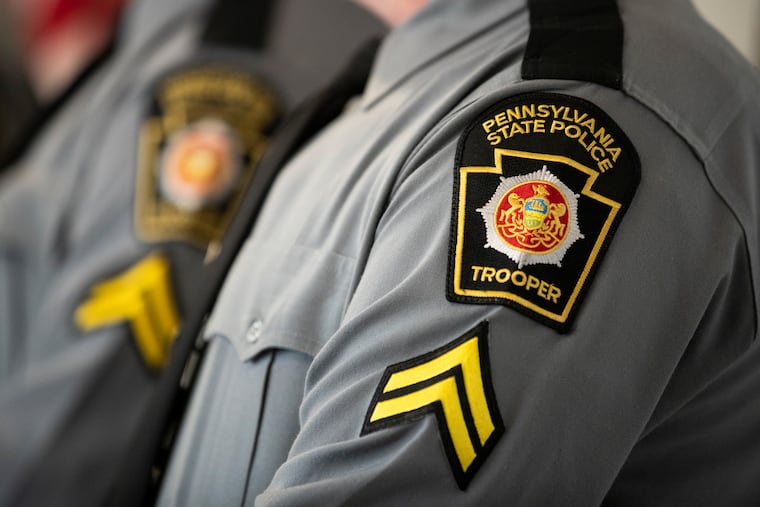Pennsylvania State Police roll out body cameras to Philly-area troopers
Body cameras are now available for the 150 patrol troopers at Pennsylvania State Police Troop K.

Amid continued calls for increased police accountability and transparency, the Pennsylvania State Police announced that it has issued body cameras to all troopers in Philadelphia, Montgomery, and Delaware Counties.
State Police Troop K, which has its headquarters in the West Park area of the city, now has body cameras available for its 150 patrol troopers across its three stations in Philadelphia, Media, and Skippack, the agency announced.
The distribution of body cameras to Troop K is part of a statewide rollout that started at Troop H’s Carlisle station in Cumberland County last July after the fatal shooting of 18-year-old Anthony Allegrini by a Pennsylvania state trooper on I-95.
Before that, none of the agency’s 4,841 troopers had body cameras.
Capt. Gerard McShea, commanding officer of Troop K, said the rollout began at the Philadelphia station on April 8, followed by the Media station April 15, and the Skippack station April 22. Troopers are required to sign out body cameras at the start of their shifts, and sign them back in when they’re done, said McShea.
All 203 members of Troop K are trained to use the cameras, he said.
Pennsylvania State Police troops covering 19 counties now have body cameras, the agency said in a statement. The state police expects to have all of its troopers equipped with body cameras and updated mobile video recorders by the end of 2025.
Experts say body cameras provide needed accountability at a time when law enforcement is under increasing scrutiny. And because the cameras record both sides of officers’ interactions with the public, the scrutiny and accountability extends to those who come into contact with troopers as well. Recordings from the cameras are often essential components of investigations into law enforcement actions.
“The Pennsylvania State Police is committed to increasing the public’s trust in law enforcement, and these cameras are an important part of that,” said Colonel Christopher Paris, Commissioner of the Pennsylvania State Police.
State Rep. Morgan Cephas (D., Philadelphia) said she and her colleagues Reps. Ben Waxman and Jordan Harris, also Philadelphia Democrats, pushed to accelerate the rollout at Troop K in light of Allegrini’s death and other fatal incidents involving Pennsylvania State troopers.
“Without that type of accountability and transparency, it not only puts our citizens in danger, but it also continues to erode the trust our communities have with law enforcement,” said Cephas. “This was a critical moment to not just hone in on this one particular incident, but looking at incidents at large that involve that type of interaction.”
Before body cameras were put in place, troopers relied on mobile video recorders that were only able to record what was happening right in front of patrol vehicles, McShea said Tuesday.
“It just gives us another perspective and actually the perspective of what the trooper is seeing,” he said. “There’s not just what you remember of what occurred or your account of what occurred. There’s actual captured video evidence.”
Body-cam footage would have been beneficial for the investigation into the shooting of Allegrini and may have provided a more accurate picture of the events of that night, said McShea.
Allegrini was killed when authorities say he struck two troopers with his Audi S4 as they tried to disperse an illegal car meetup and one of them shot him. The responding troopers did not have body cameras at the time of the incident, footage that would have left the sequence of events from that night more clear, McShea said.
“It would have provided a different perspective that we didn’t have,” he said. “Perspective that wasn’t captured on the mobile video recorder or on the cell phone footage that was captured by people passing by. I think it would have left less doubt in people’s minds as to what occurred.”
Inquirer staff writer Gillian McGoldrick contributed to this article.